Having spent over a decade in the plastics and elastomer industry, I’ve had the chance to work hands-on with countless materials, from rigid polymers to flexible compounds. One material that consistently stands out for its versatility and widespread adoption is Thermoplastic Elastomer (TPE). Whether it’s in your phone case, car dashboard, or even medical equipment, TPE seems to be everywhere. But what makes this material so popular? Why do designers, engineers, and manufacturers keep turning to it? In this article, I’ll share insights from my experience to explain why TPE has become a go-to choice across industries, diving into its properties, applications, and unique advantages. If you’re wondering whether TPE is the right material for your project or simply curious about its appeal, this deep dive will give you a clear, practical understanding.
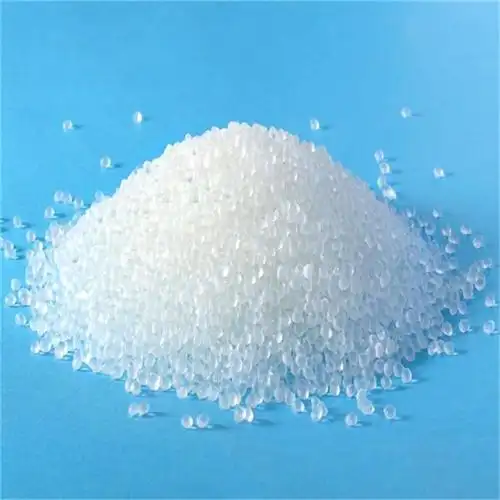
What Makes TPE So Special?
Let’s start with the basics. TPE is a unique material that blends the stretchy, resilient qualities of rubber with the easy processability of thermoplastics. Imagine a material that feels soft and flexible like rubber but can be molded or extruded like plastic when heated. That’s TPE in a nutshell. Early in my career, I worked on a project designing soft-touch grips for tools, and TPE’s ability to combine comfort with durability was a game-changer. It’s not just one material but a family of compounds, including types like styrenic block copolymers (SBC), thermoplastic polyurethanes (TPU), and thermoplastic vulcanizates (TPV), each tailored for specific needs.
So, why is TPE so widely used? From my perspective, it comes down to a combination of versatility, cost-effectiveness, and sustainability. Let’s break it down step by step, drawing on what I’ve seen in the field.
The Core Properties Driving TPE’s Popularity
TPE’s widespread use stems from its unique properties, which make it adaptable to a variety of applications. Over the years, I’ve tested TPE in countless scenarios, from consumer goods to industrial components, and here’s what makes it stand out:
Elasticity and Flexibility: TPE can stretch significantly and snap back to its original shape, mimicking rubber. This elasticity is why I’ve seen it used in everything from yoga mats to automotive seals.
Customizable Hardness: TPE can be formulated to range from super soft (like a gel, 0 Shore A) to relatively rigid (up to 65 Shore D). I once worked on a project where we needed a material that was soft enough for a comfortable grip but durable enough for daily use—TPE was the perfect fit.
Ease of Processing: Unlike traditional rubber, which requires complex vulcanization, TPE can be processed using standard thermoplastic equipment like injection molding or extrusion. This saves time and money, something I’ve seen manufacturers appreciate when scaling production.
Recyclability: TPE is recyclable, which aligns with the growing demand for sustainable materials. In my work with eco-conscious brands, TPE’s ability to be reprocessed without losing properties has been a major selling point.
Soft-Touch Feel: TPE’s tactile, grippy texture makes it ideal for products where user comfort is key, like phone cases or medical devices. I’ve had clients rave about how TPE improves the user experience.
Chemical and Weather Resistance: Depending on the formulation (like TPV), TPE can resist oils, greases, and UV exposure, making it suitable for outdoor and industrial applications. I’ve used TPV in automotive weather seals that held up under harsh conditions.
Biocompatibility: Certain TPE grades are free of phthalates, latex, and BPA, making them safe for medical and food-contact applications. This was critical in a project I worked on involving medical tubing, where safety was non-negotiable.

A Snapshot of TPE’s Advantages
To give you a clearer picture, here’s a table summarizing the key properties that make TPE so widely used, based on my experience working with the material.
|
Property |
Description |
Benefit |
Example Application |
|---|---|---|---|
|
Elasticity |
Stretches and returns to shape like rubber |
Ideal for flexible, durable components |
Gaskets, shoe soles |
|
Customizable Hardness |
Ranges from soft (0 Shore A) to hard (65 Shore D) |
Suits diverse needs, from soft grips to rigid parts |
Phone cases, tool handles |
|
Recyclability |
Can be reprocessed without losing properties |
Supports sustainable manufacturing |
Reusable consumer goods |
|
Ease of Processing |
Compatible with injection molding, extrusion, and 3D printing |
Reduces production costs and complexity |
Automotive parts, medical tubing |
This table captures why TPE is a favorite in so many industries—it’s flexible, sustainable, and easy to work with, all while meeting diverse performance needs.
TPE’s Wide-Ranging Applications
One of the most exciting aspects of TPE is its ability to fit into so many different industries. In my career, I’ve seen it used in ways I never would have imagined when I first started out. Here’s a look at some of the key sectors where TPE shines:
1. Automotive Industry
TPE is a staple in automotive manufacturing due to its durability, flexibility, and aesthetic appeal. I’ve worked on projects where TPE was used for:
Seals and Gaskets: TPE’s elasticity and weather resistance make it ideal for door seals and window gaskets that need to withstand rain, heat, and cold.
Interior Components: Soft-touch dashboards, gearshift knobs, and armrests often use TPE for its comfortable feel and durability. I once helped a carmaker select a TPE grade that improved the tactile experience of their vehicle interiors.
Under-the-Hood Parts: Certain TPEs, like TPV, resist oils and heat, making them suitable for hoses and vibration-dampening components.
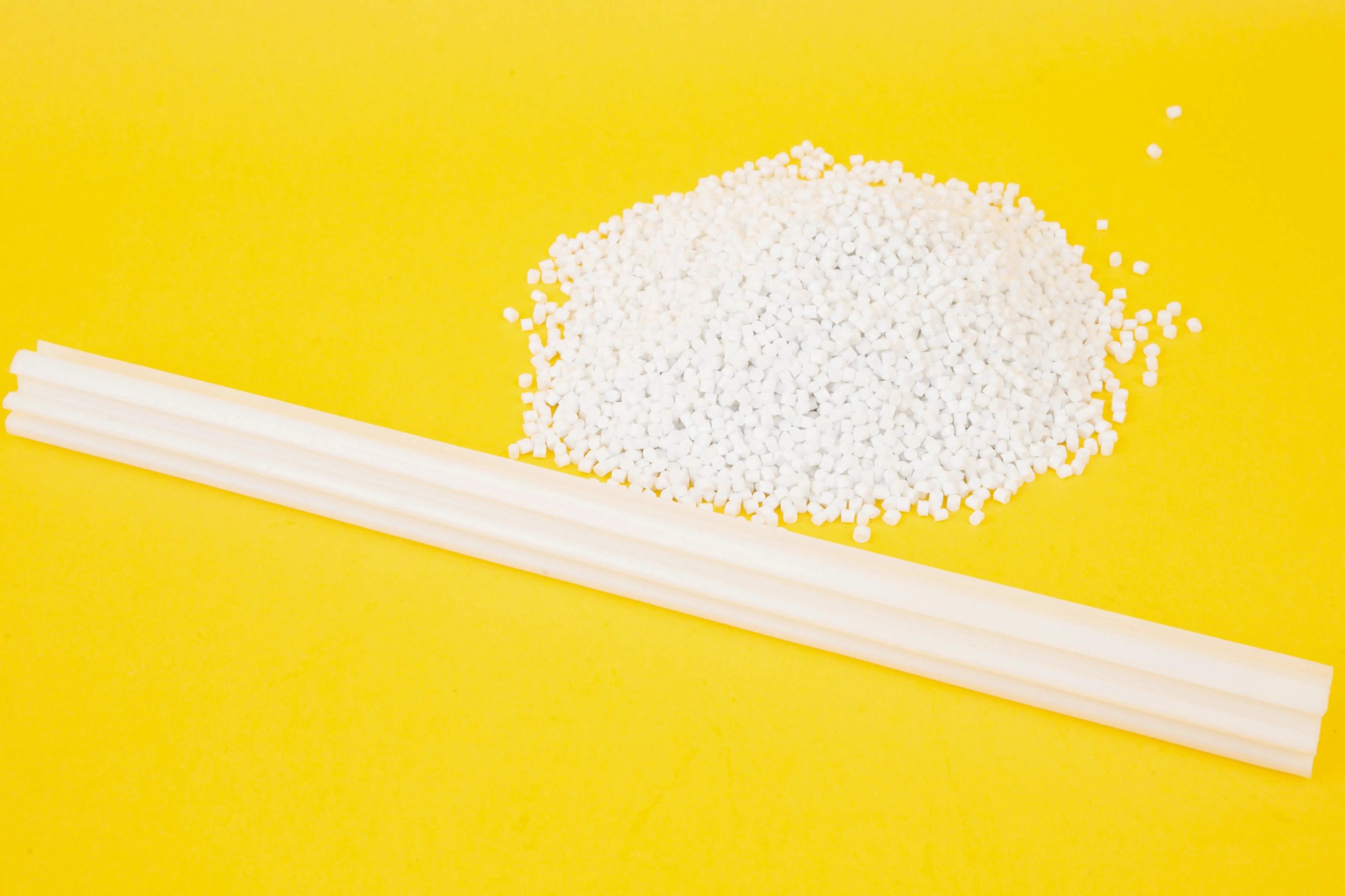
2. Medical and Healthcare
TPE’s biocompatibility and flexibility make it a go-to for medical applications. I’ve collaborated with medical device manufacturers who chose TPE for:
Tubing and Catheters: TPE’s softness and safety (free from harmful additives) are perfect for medical tubing. I worked on a project where TPE tubing improved patient comfort without compromising safety.
Syringe Stoppers: TPE’s elasticity ensures a tight seal, which is critical for precise dosing.
Wearable Devices: TPE’s skin-friendly properties make it ideal for wearable medical monitors, a growing field I’ve seen explode in recent years.
3. Consumer Goods
TPE’s soft-touch feel and versatility make it a favorite for everyday products. Some examples from my experience include:
Phone Cases: TPE’s shock-absorbing properties and grippy texture protect phones while feeling great in hand. I’ve designed cases that customers loved for their balance of style and function.
Household Items: From toothbrush handles to kitchen utensil grips, TPE adds comfort and durability. I once helped a brand create a line of TPE-coated cookware handles that became a bestseller.
Toys: TPE’s safety and flexibility make it ideal for soft, squeezable toys that are safe for kids.
4. Sports and Fitness
TPE’s shock-absorbing and flexible nature makes it a natural fit for sports equipment. I’ve seen it used in:
Shoe Soles: TPE provides cushioning and durability for athletic shoes. I worked with a sneaker brand that used TPE to create soles that balanced comfort and longevity.
Yoga Mats: TPE’s eco-friendly and non-slip properties make it a popular choice for yoga mats, which I’ve seen gain traction in the fitness market.
Protective Gear: From shin guards to helmet linings, TPE’s impact resistance is a key advantage.
5. Industrial Applications
TPE’s durability and resistance to harsh conditions make it suitable for industrial uses. I’ve used it in:
Cable Insulation: TPE’s flexibility and toughness protect cables in demanding environments.
Seals and O-Rings: In industrial machinery, TPE seals provide reliable performance under pressure and temperature fluctuations.
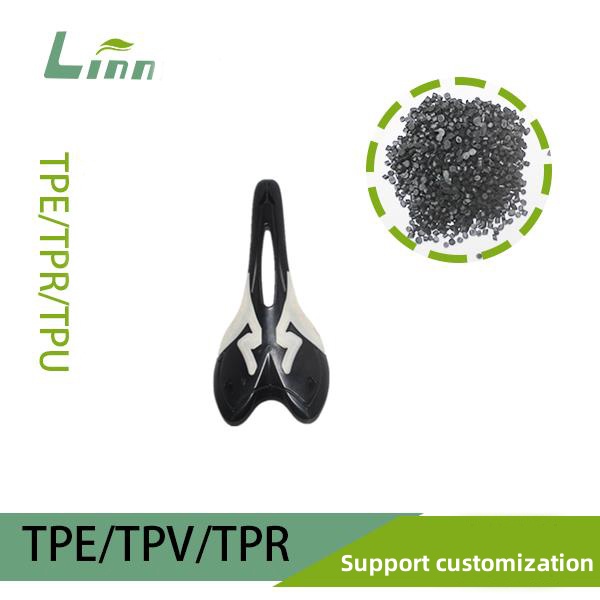
Why TPE Stands Out: Real-World Insights
To illustrate TPE’s appeal, let me share a story from my career. A few years ago, I was part of a team designing a new line of ergonomic office chairs. The client wanted armrests that were soft and comfortable but durable enough to withstand daily use. We tested several materials, but TPE stood out for its perfect balance of softness, elasticity, and recyclability. The armrests were a hit—users loved the feel, and the client appreciated the cost savings from TPE’s easy processing. This project showed me firsthand how TPE’s unique properties can elevate a product.
Another time, I worked with a medical device company developing flexible tubing for IV lines. They needed a material that was safe, flexible, and easy to sterilize. TPE checked all the boxes, and its biocompatibility gave the client peace of mind. The tubing performed flawlessly in clinical trials, and it’s still in use today. Experiences like these highlight why TPE is a go-to choice across so many fields.
TPE’s Advantages Over Other Materials
In my work, I’ve often compared TPE to other materials like rubber, silicone, or traditional plastics like PVC or PE. Here’s why TPE often comes out on top:
Vs. Rubber: Traditional rubber requires complex vulcanization, which is time-consuming and expensive. TPE, on the other hand, can be processed using standard thermoplastic equipment, saving time and money. I’ve seen manufacturers switch to TPE to streamline production without sacrificing performance.
Vs. Silicone: While silicone is great for high-temperature applications, it’s pricier and harder to recycle. TPE offers similar flexibility at a lower cost and with better sustainability, which I’ve found appeals to budget-conscious clients.
Vs. PVC: PVC can be toxic if not properly formulated, and it’s less flexible than TPE. I’ve worked with clients who switched from PVC to TPE for medical and consumer applications to meet stricter safety regulations.
Vs. PE: Polyethylene is rigid and lacks the elasticity of TPE, making it unsuitable for applications requiring a soft, stretchy material. I’ve advised clients to choose TPE over PE when flexibility is a priority.
Challenges and Limitations of TPE
No material is perfect, and TPE has its limitations. In my experience, these are the main challenges:
Temperature Sensitivity: TPE can soften or degrade above 170°C, which I’ve seen limit its use in high-heat environments like engine compartments.
Mechanical Strength: Compared to engineering plastics, TPE has lower tensile strength, so it’s not ideal for load-bearing applications. I once had to steer a client away from TPE for a structural component because it couldn’t handle the stress.
Cost: While TPE is cost-effective compared to silicone or rubber, it’s pricier than basic plastics like PE. This can be a factor in high-volume, cost-sensitive projects.
Despite these limitations, TPE’s benefits often outweigh its drawbacks, especially when flexibility and user comfort are priorities.
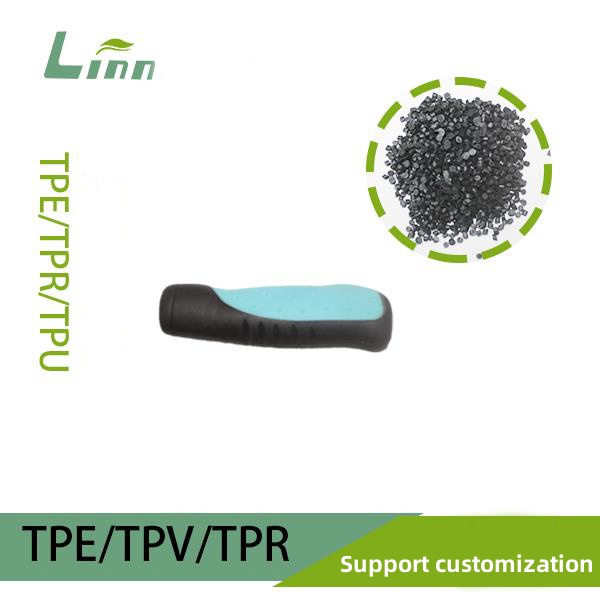
Practical Tips for Using TPE
Based on my years in the industry, here are some tips for anyone considering TPE for their project:
Choose the Right Grade: TPE comes in many formulations (SBC, TPU, TPV, etc.), each with specific properties. Work with your supplier to select the right grade for your application. For example, I’ve used TPV for outdoor seals due to its UV resistance.
Test for Compatibility: If TPE will be used with other materials (like in overmolding), ensure compatibility to avoid adhesion issues. I’ve seen projects fail because the TPE grade wasn’t compatible with the substrate.
Optimize Processing: TPE’s ease of processing is a strength, but improper temperatures can lead to defects. I always recommend fine-tuning molding parameters to get the best results.
Check Certifications: For medical or food-contact applications, ensure the TPE meets standards like FDA or USP Class VI. I’ve worked with suppliers to verify certifications before moving forward with production.
Sustainability: TPE’s Eco-Friendly Edge
One reason TPE is gaining traction is its sustainability. In my work with eco-conscious brands, I’ve seen TPE’s recyclability make a big difference. Unlike traditional rubber, which is hard to recycle, TPE can be reprocessed multiple times without losing its properties. This reduces waste and aligns with circular economy goals. I’ve advised clients to highlight TPE’s eco-friendly credentials in their marketing, as it resonates with environmentally aware consumers.
Additionally, some TPEs are made with bio-based components, further reducing their environmental footprint. While not all TPEs are bio-based, the option exists for companies looking to go greener, which I’ve seen become a bigger focus in recent years.
The Future of TPE
Looking ahead, I believe TPE’s popularity will only grow. Advances in TPE formulations are expanding its applications, from 3D printing to wearable technology. In my recent projects, I’ve noticed a surge in demand for TPE in smart devices, where its flexibility and biocompatibility are critical. As sustainability becomes a bigger priority, TPE’s recyclability and potential for bio-based formulations will keep it at the forefront of material innovation.
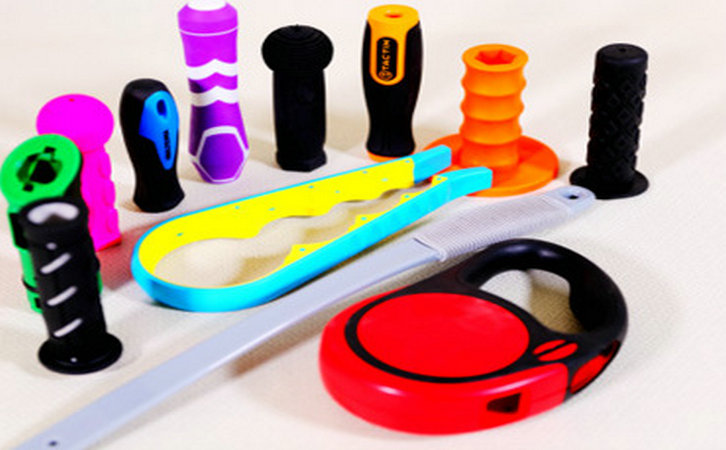
Final Thoughts: Why TPE Is Here to Stay
From my years in the industry, I can confidently say that TPE’s widespread use comes down to its unique ability to balance performance, cost, and sustainability. Its elasticity, customizable hardness, and ease of processing make it a favorite in industries ranging from automotive to medical to consumer goods. Whether you’re designing a product that needs to feel great in hand, withstand harsh conditions, or meet strict safety standards, TPE is often the answer. My advice? If you’re considering TPE for your next project, talk to a materials expert to find the perfect grade for your needs. It’s a decision that could save you time, money, and headaches down the road.
Related Questions and Answers
Q: Is TPE safe for medical applications?
A: Yes, certain TPE grades are biocompatible and free from phthalates, latex, and BPA, making them safe for medical devices like tubing and catheters. In my work, I’ve always ensured TPE meets FDA or USP Class VI standards for medical applications.
Q: How does TPE compare to silicone in terms of cost?
A: TPE is generally cheaper than silicone, especially for high-volume production. I’ve seen clients switch to TPE to cut costs without sacrificing flexibility or safety, though silicone is better for extreme heat.
Q: Can TPE be used in outdoor applications?
A: Yes, certain TPEs, like TPV, are UV- and weather-resistant, making them great for outdoor seals or grips. I’ve used TPV in automotive weather seals that held up for years in harsh conditions.
Q: Is TPE recyclable?
A: Absolutely, TPE can be reprocessed multiple times without losing its properties, unlike traditional rubber. I’ve worked with brands that emphasize TPE’s recyclability to appeal to eco-conscious consumers.
Q: What’s the best way to choose a TPE grade for my project?
A: Work with a reputable supplier and test different grades based on your application’s needs—whether it’s hardness, chemical resistance, or biocompatibility. In my experience, a quick consultation with a materials expert can make all the difference.





